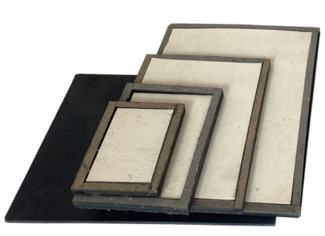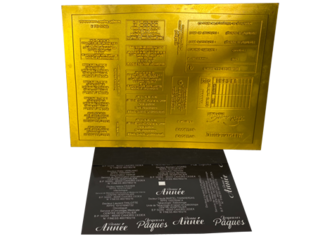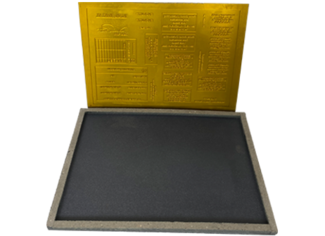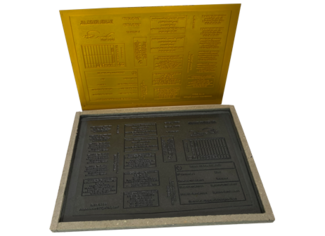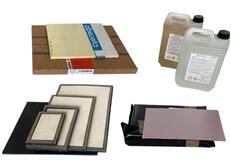Pre-inked stamp : technical and innovative
a product mastered by our know-how
Materials and supplies needed
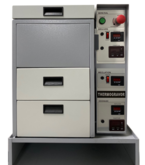
Thermogravor photopolymer processing machine
A 4 size photopolymer processing machine
Designed and manufactured by our company, to produce photopolymer stamps from liquid resin or hard photopolymer plates to be pressed into a matrix board (mold)
The machine is made of 3 parts :
Exposure part (to expose photopolymer material to UV light)
- UV tubes with on/off digital timer including memory
- vacuum pump to keep positive and negative films or negative film and photopolymer plate in close contact
- glasses with closing and calibrating system for liquid photoplymer material processing
- plastic tray with holding system, for liquid resin post exposure
- compressor to pierce air bubbles in liquid resin
Engraving part : (to develop (wash out) photopolymer material
- all pieces are in stainless steel
- thermostat for water temperature control
- timer to start the engraving unit
- the engraving mechanism is outside water to avoid dirt and jamming problems of the moving part
Drying part (to harden photopolymer material)
- 3 drying compartments
- temperature control by thermostat
- on/off timer
- 3 drying compartments
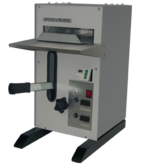
PEVP A5 Moulding and Vulcanizing Press
Moulding and vulcanizing press to press characters into a matrix board and get a mold in which rubber/ ink is molded
- Size A5 (270 x 230 mm)
- Hydraulic pressure provided by coupled hydraulic jack and pump
- 2 PID electronic controllers securing perfect accuracy and distribution of temperature for pre-inked and rubber stamp making
- Manual digital timer for control of processing times.
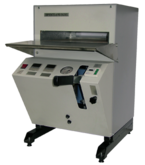
PEVP A4 Moulding and Vulcanizing Press
Moulding and vulcanizing press to press characters into a matrix board and get a mold in which rubber/ ink is molded
- Size A4 (350 x 300 mm)
- pressure is provided by separate pump and jack
- 2 PID electronic controllers secure perfect accuracy and distribution of temperature for pre-inked and rubber stamp making
- Manual digital timer for cycle control
- Manometer for pressure control
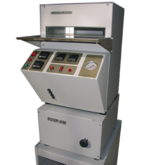
Automatic Moulding and Vulcanizing Press
Motorized moulding and vulcanizing press, size 350 x 300 mm, for rubber and pre-inked stamp making.
All manufacturing steps are automatically performed . It is just necessary to set parameters (temperatures, preheating and cooking times, cooking pressure) Then, pushing a single key will automatically start the procedure : platen rising, contact during pre-heating time, degassing, pressure and cooking , opening when programmed time is over.
- Pressure by motorized hydraulic pump, with separate jack to avoid heat transmission to hydraulic parts.
- automatic control of manufacturing cycles
- preheating and curing time are controlled by a digital timer
- switch for additional degassing
- emergency stop
- manometer for pressure control
- 2 PID electronic controllers securing perfect accuracy and distribution of temperature for pre-inked and rubber stamp making
Applications
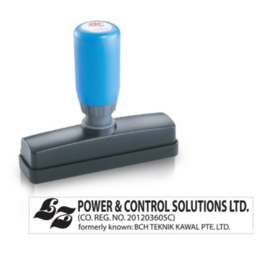
Company stamp : contact details, accounting, store, ... in premix gel
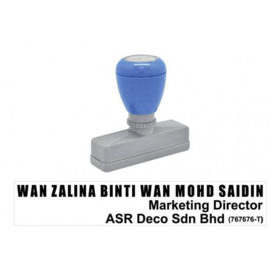
Forms, visual identity, slogan, ... quickly and simply printed with pre-inked stamp
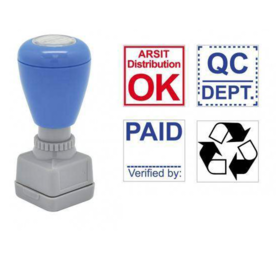
Fine reproduction and simple use for printing with premix based pre inked stamp
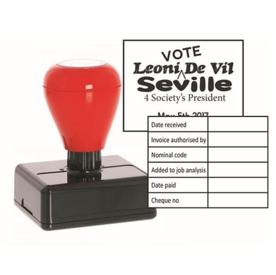
Tables, account numbers, store information... with pre-inked stamps
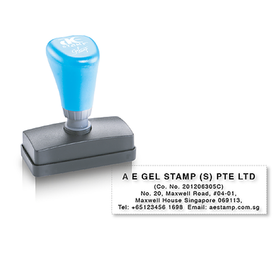
Company stamp with name, address, registration number... in pre inked material
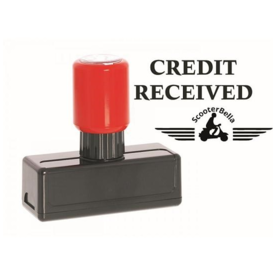
Quality reproduction with pre-inked stamps : logo, art drawing, pictograms ...
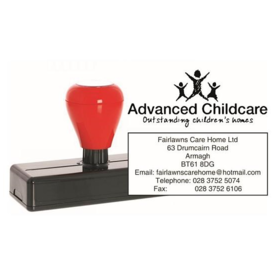
Company stamp in pre inked gel
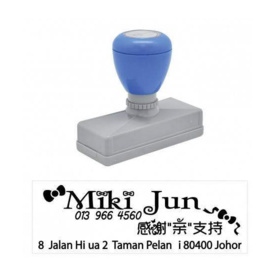
signature, slogan, drawing... : a quality marking with pre-inked stamp
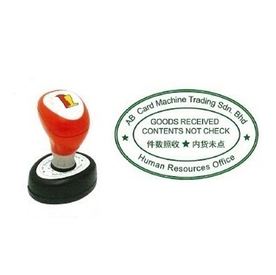
Pressure adjustable mount, necessary for pre inked stamps
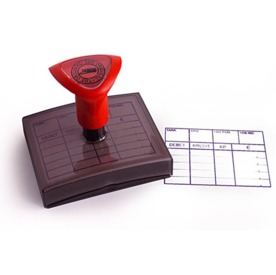
Fast printed table with a pre inked stamp
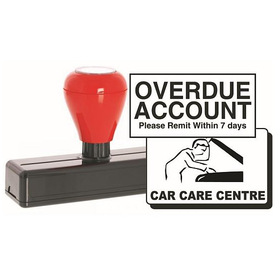
Pre inked stamp with adjustable pressure mount : logos, phrases..

pre inked stamp for standard formulas : confidential, urgent ...
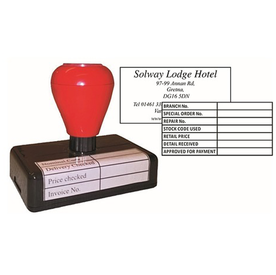
Pre inked stamp for accounts, tables..
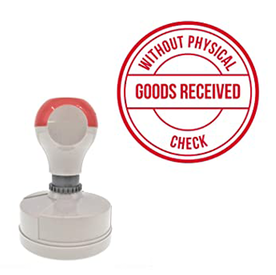
Pre inked stamp for company identification
Videos
Faq
Pre inked stamp is the 3rd kind of stamp on the market, after rubber and photopolymer stamps
Pre inked is made of a gel containing microcapsules of ink. Gel is cooked in a matrix for a precise time at precise temperature and covered with an absorbent felt that will serve as an ink reservoir .
Then, stamp is placed is a special mount with adjustable pressure to produce right print, neither too light nor too dark.
When pressing the mount, ink capsules release ink to print support.
When pressure is released, microcapsules are filled again with ink contained in the felt backside
Rubber stamps are mainly used for administrative applications, as a signature of a company, administration, commercial entity or individual. However other kind of stamps are available, such as daters specifically used to date documents or numberers to affix numbers on document series.
In France, company stamp is required to process most documents such as contracts, quotes or delivery notes. Signature is generally made next to or on the company stamp, with date.
Stamp is also widely used in scrapbooking applications, to customize creations : cards, announcements, albums, Christmas cards, birthdays… Multiple accessories are available for using rubber stamps in a different way : embossing powder, multi-color ink, metallic inks ...
Finally, stamps are also used in specific applications: outdoor use with UV inks, tracking information (for instance ampoules, with acid inks), textile marking for clothes…
Historically, texts were arranged and images were engraved by typographic workers then gathered together and tightened inside a forme. Then a matrix made of wax and other materials was placed on top and the whole was placed inside a heating press to imprim patterns inside softened wax.
After cooling, the wax mold was covered with rubber and parchment paper and placed again in the heating press so that rubber can flow inside mold depth and produce relief for stamps. The resulting rubber sheet was cut into stamps.
Development of computers allowed to give up cumbersome manufacturing tools (lead character fonts, presses..) and use computer-aided publication and photosensitive polymers
Now, stamp manufacturing process consists of several easy steps:
- patterns to be reproduced are drawn on a computer
- a film is printed to get a negative
- photopolymer liquid resin is exposed through the negative to get a photopolymer stamp, or hard photopolymer plate is exposed to produce a cliche
- photopolymer cliche is pressed into a matrix board to get a mold for rubber (rubber stamps) or premix gel (pre inked stamps) moulding
Main advantages of pre inked stamps are :
- with its automatic inking design, requiring no inking or cartridge replacement, pre inked stamp can produce up to 50000 prints with exceptional quality
- the pressure adjustable mount allows to adjust print darkness
- not very developed on the market because of its production technicality, it offers a special product, different from other common stamps
Main drawback is a strict manufacturing process, requiring very precise time and very precise temperature.
Pre inked stamp is the most technical stamp, its production requiring very precise equipment and processing (time and temperature)
First step is the same as with rubber stamp ; day light film (negative) and hard photopolymer plate are processed in corresponding parts of Thermogravor photopolymer machine.
Then, photopolymer plate is pressed into a pre inked matrix board or framed matrix board to get a mold (depth). Moulding is made with automatic, PEVP A4 or PEVP A5 press.
Last step consists in cooking premix gel. This requires a press with perfect temperature control (precise to degree) and even temperature distribution all over platen surface.
Our presses have been subject of a thermal study to guarantee a uniform temperature securing perfect cooking of pre-inked gel in order to get long lasting quality stamps.
Framed matrix board was designed and patented by our company, with the aim to make pre inked stamp manufacture easier avoiding assembly and cleaning operations and reducing cooking time.
Previously, photopolymer plate was pressed into a matrix board and the mold obtained was placed at the bottom of an aluminum frame. Premix gel was poured inside and cooked in a press. When unmold, complete aluminum frame had to be cleaned with solvents before re-use
With framed matrix board, aluminum frame is no longer necessary.
Frame is directly built around the matrix board for easier processing : faster cooking and no cleaning required.
Framed matrix board is available in A8, A7, A6, A5 or A4 sizes
Pre inked stamp is the most technical stamp, its production requiring very precise equipment and processing (time and temperature)
First step is the same as with rubber stamp ; day light film (negative) and hard photopolymer plate are processed in corresponding parts of Thermogravor photopolymer machine.
Then, photopolymer plate is pressed into a pre inked matrix board or framed matrix board to get a mold (depth). Moulding is made with automatic, PEVP A4 or PEVP A5 press.
Last step consists in cooking premix gel. This requires a press with perfect temperature control (precise to degree) and even temperature distribution all over platen surface.
Our presses have been subject of a thermal study to guarantee a uniform temperature securing perfect cooking of pre-inked gel in order to get long lasting quality stamps.

